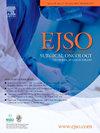The influence of physical post-operative rehabilitation interventions to improve upper limb strength in women undergoing breast cancer surgery: A Systematic Review of the literature
IF 3.5
2区 医学
Q2 ONCOLOGY
引用次数: 0
Abstract
Background
Breast cancer is the most prevalent cancer globally. Primary treatment commonly involves surgery to the breast and axilla, which can potentially cause a variety of physical impairments, negatively affecting patients’ quality of life. Consequently, effective rehabilitation techniques may help patients recover their physical function following surgery. Therefore, this review aims to identify whether post-operative rehabilitation interventions improve upper limb strength in women following breast cancer surgery and to compare the efficacy of different approaches.
Methods
The literature search was completed in October 2023 using MEDLINE, EMBASE and Cochrane databases. Eligible studies included full-text English articles of studies performed in patients who have undergone breast cancer surgery and subsequent post-operative rehabilitation to assess the outcome on upper limb strength.
Results
Nine studies were included with 786 women who underwent breast cancer surgery and subsequent post-operative rehabilitation. Six studies were rated as level-I evidence, whilst three studies represented level-II evidence. Five studies reported an increase in upper limb strength following rehabilitation with multimodal therapy and proprioceptive neuromuscular facilitation. Findings regarding the optimal duration of intervention and the best time to commence rehabilitation following surgery were inconclusive.
Conclusion
This review has demonstrated heterogeneous findings regarding the impact of post-operative rehabilitation on upper limb strength. Furthermore, the ideal time point to initiate rehabilitation post-surgery, as well as the appropriate length of intervention needs further investigation. Therefore, additional research is necessary to better inform clinical practice in this area.
术后物理康复干预对改善乳腺癌手术妇女上肢力量的影响:文献系统综述
背景乳腺癌是全球发病率最高的癌症。初治通常需要对乳房和腋窝进行手术,这可能会造成各种身体损伤,对患者的生活质量产生负面影响。因此,有效的康复技术可帮助患者在术后恢复身体功能。因此,本综述旨在确定术后康复干预是否能改善乳腺癌术后女性的上肢力量,并比较不同方法的疗效。方法2023年10月,我们使用MEDLINE、EMBASE和Cochrane数据库完成了文献检索。符合条件的研究包括对接受乳腺癌手术和术后康复治疗的患者进行上肢力量评估的全文英文研究文章。结果共纳入九项研究,涉及 786 名接受乳腺癌手术和术后康复治疗的女性。六项研究被评为一级证据,三项研究为二级证据。五项研究报告称,采用多模式疗法和本体感觉神经肌肉促进康复后,上肢力量有所增强。有关干预的最佳持续时间和术后开始康复的最佳时间的研究结果尚无定论。此外,手术后开始康复治疗的理想时间点以及适当的干预时间也需要进一步研究。因此,有必要开展更多的研究,以便为这一领域的临床实践提供更好的信息。
本文章由计算机程序翻译,如有差异,请以英文原文为准。
求助全文
约1分钟内获得全文
求助全文
来源期刊

Ejso
医学-外科
CiteScore
6.40
自引率
2.60%
发文量
1148
审稿时长
41 days
期刊介绍:
JSO - European Journal of Surgical Oncology ("the Journal of Cancer Surgery") is the Official Journal of the European Society of Surgical Oncology and BASO ~ the Association for Cancer Surgery.
The EJSO aims to advance surgical oncology research and practice through the publication of original research articles, review articles, editorials, debates and correspondence.
 求助内容:
求助内容: 应助结果提醒方式:
应助结果提醒方式:


